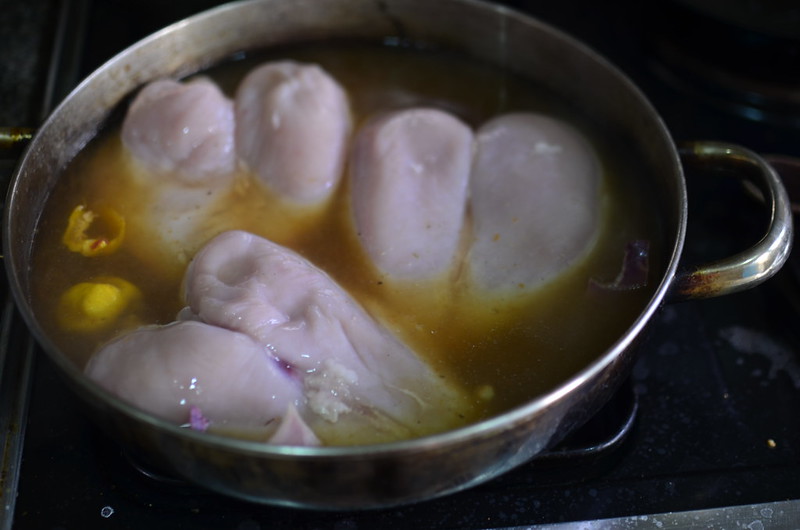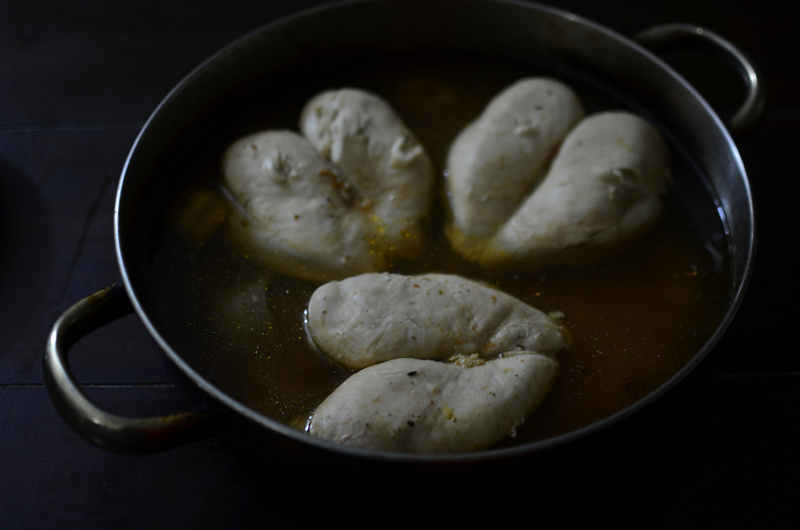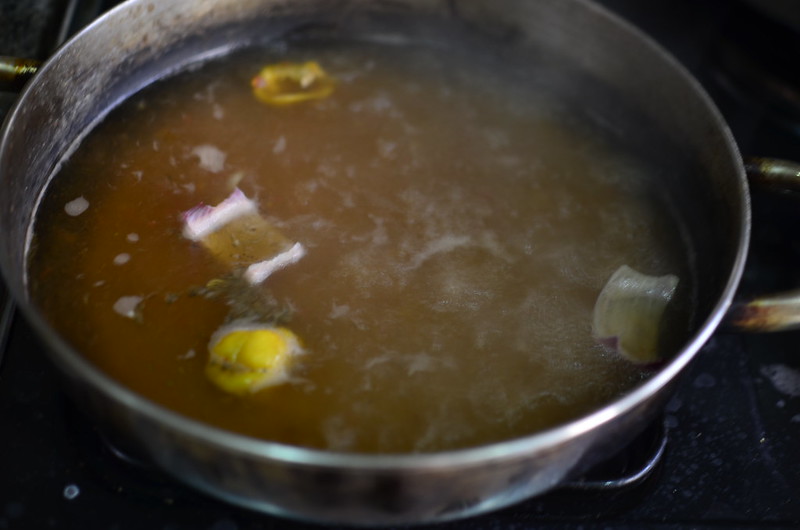Or how to make the juiciest chicken breasts ever, all thanks to osmosis and gentle temperatures.
Poaching is the art and science of cooking foods in a light liquid on low heat.Poached chicken breasts, often considered diet food takes on moistness and niceness untold from gentle cooking in a light broth, which itself becomes great stock.
Brining and marinades generally work in the same way.
This recipe is full of gifts. But why bother?
- Great texture – can be shredded or sliced
- It has great potential to take on a variety of delicious flavours
- It stays juicy
- Did I mention easy to prepare?
Chicken breasts are often maligned for their ability to become tough, tasteless and dry but I’ve found two methods that create the tastiest chicken breasts ever – one is roasting on very high heat and the other? Poaching.
Typically, I begin with a nice stock. As the chicken will take on its flavours, I’m particular about this.
When I don’t have stock, I start of with water and white wine if available, seasoned with herbs, citrus, chilies.
 All that is required is checking for seasoning and then setting the babies in to do their thing.
All that is required is checking for seasoning and then setting the babies in to do their thing.
The result; after 20 – 30 minutes of cooking is awesome.
How does this work? Well, boiling on high heat does something to toughen the proteins in meats, and gentle heating? The opposite. On a simmer too, the water isn’t bombarding the chicken membrane causing resistance, and leading to it forming a thick seal, simmering allows osmosis prevail where moisture is drawn into the breast leaving it tender and juicy.
Brining meat (that is, putting meat into a salt-water solution) adds moisture to the meat through osmosis.
Osmosis happens when water flows from a lower concentration of a solution to a higher concentration through a semipermeable membrane. In meat, this membrane is the plasma membrane that surrounds the individual cells.
When meat is placed in a brine, the meat’s cell fluids are less concentrated than the salt water in the brining solution. Water flows out of the cells in the meat and salt flows in. The salt then dissolves some of the fiber proteins, and the meat’s cell fluids become more concentrated, thus drawing water back in; Source – exploratorium.edu


- At least 1 litre Chicken stock or water (and white wine)
- Aromatics - ginger, garlic, onions
- Spices - Chilies, dried spices etc
- Herbs - hardy ones
- 2 - 3 raw/uncooked chicken breasts
- Salt and pepper, to taste
- Place stock (or water), aromatics, spices and herbs in a large saucepan on medium-high heat and bring to the boil
- Check for seasoning and adjust to taste
- Gently lay the chicken breasts in and return to the boil with the lid of the saucepan on
- Reduce the heat to low and let simmer on one side for 8 - 10 minutes
- Turn onto the other side and let cook for another 8 - 10 minutes
- I like to flip back to the starting side, then I take it off the heat
- Let the breasts stand in liquid for an additional 5 - 10 minutes
- Remove and use as you like - slice, shred, eat
- Hardy herbs work well, as do some soft ones like scent leaf and basil
- You can flavor the stock to match cuisines - make it Asian style with soy sauce, lemon grass, or Mexican with cumin and cilantro roots
- Cooking times will vary depending on the size of the breasts
- Check for doneness by poking through to the thickest part of the chicken
 [wpurp-searchable-recipe]How to Poach Chicken Breasts – – – [/wpurp-searchable-recipe]
[wpurp-searchable-recipe]How to Poach Chicken Breasts – – – [/wpurp-searchable-recipe]





Leave a Reply